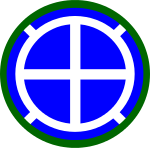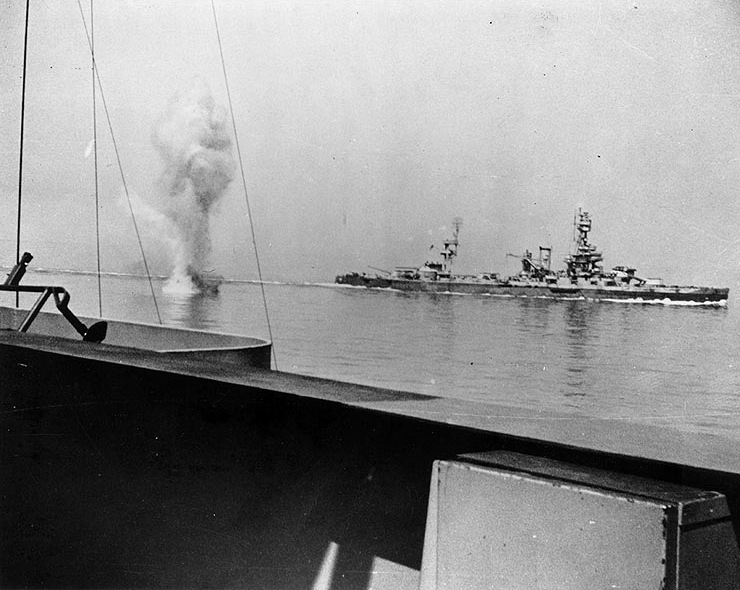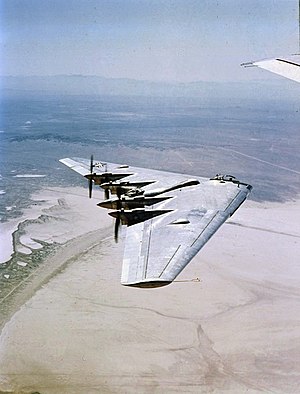Gamecock Fanatics
You are using an out of date browser. It may not display this or other websites correctly.
You should upgrade or use an alternative browser.
You should upgrade or use an alternative browser.
Countdown to Kickoff
- Thread starter Swayin
- Start date
Homebrewcock
GCF Top Poster

Steve Wadiak.
Homebrewcock
GCF Top Poster
I drew a blank on #37 until Homebrew posted Steve Wadiak, so instead I will do a late entry for #70 DT Andrew Provence since we somehow left him out of the right countdown day. Kinda appropriate to put him next to George Rogers, too.

Here's a picture of Provence that appeared in the 1982-83 student annual.

Sa-lute!

https://www.thestate.com/sports/college/university-of-south-carolina/article18173504.htmlThe selection of my Top 5 defensive tackles includes some of Carolina's top record setters on the defensive side of the football.
No. 1 on my list is Andrew Provence (1980-82). Since they started keeping the stat in 1967, he was one of only three interior linemen to lead the Gamecocks in tackles for a season, and the only one who did it two years in a row.
Andrew had 161 tackles in '81 and 133 in '82, and he is one of only two players to record more than 400 tackles in his career. He is second on the all-time list for sacks (26.0) and fourth on the career list for tackles for loss in a season (35.0).
He was named to the 1982 Sporting News All-America team, was a third-team Associated Press All-American and was selected to play in the Senior Bowl after his senior year. Andrew was a third-round pick by Atlanta in the 1983 NFL draft, and he played a total of eight years for the Falcons and the Denver Broncos. Andrew was inducted into the USC Hall of Fame in 2010.
What I remember most about Andrew is how the boy could eat. I took him to an all-you-can-eat barbecue restaurant one day, (the rules were different then), and when he went back for a second heaping plate, the owner knew he had lost money on that customer.
https://en.wikipedia.org/wiki/Andrew_ProvenceAndrew Clark Provence (born March 8, 1961) is a former American football defensive tackle who played five seasons with the Atlanta Falcons of the National Football League (NFL). He was drafted by the Falcons in the third round of the 1983 NFL Draft. He played college football at South Carolina. Provence was also a member of the Denver Broncos.
Early years
Provence was a three-year starter at Benedictine Military School in Savannah, Georgia. He was named to the Savannah News-Press All-City team in 1977 and 1978. He also earned All-State honors in 1978. Provence was inducted into the Greater Savannah Athletic Hall of Fame in 1995.
College career
Provence played for the South Carolina Gamecocks of the University of South Carolina from 1979 to 1982. He recorded ten sacks his senior year in 1982, setting the school's single season sack record. He led the Gamecocks in tackles in 1981 and 1982. Provence was named an All-American by The Sporting News while garnering Associated Press Third Team All-American and Gannett News Service Second Team All-American accolades in 1982. He also played in the Senior Bowl after his senior year. He recorded 401 total tackles, 35.0 tackles for loss and 26.0 sacks during his college career. Provence was named to South Carolina’s Modern Era All-Time Team. He was inducted into the University of South Carolina Athletic Hall of Fame in 2010. He was named to the SEC Football Legends Class of 2010.
Professional career
Provence was selected by the Atlanta Falcons with the 75th pick in the 1983 NFL Draft. He played in 70 games, starting sixteen, for the team from 1983 to 1987 and accumulated five career sacks. He was named to the NFL All-Rookie Team by the Pro Football Writers of America.
Provence was traded to the Denver Broncos in May 1988 for a tenth round pick in the 1989 NFL Draft. He was placed on injured reserve on September 1, 1988, after tearing the connective tissue on his left foot during practice on August 31, 1988. He re-signed with the Broncos in July 1989. Provence was placed on injured reserve in August 1989. He was on injured reserve when the Broncos lost to the San Francisco 49ers by a score of 55–10 in Super Bowl XXIV on January 28, 1990.
Personal life
Provence has worked as a mental health counselor since August 1990, months after retiring from the NFL. He also has a master’s degree in professional counseling from Liberty University and is an ordained minister.
Here's a picture of Provence that appeared in the 1982-83 student annual.
Sa-lute!
Last edited by a moderator:
USS Antietam, CV-36.
_operating_training_aircraft_on_19_April_1961_(KN-4834).jpg/1280px-USS_Antietam_(CVS-36)_operating_training_aircraft_on_19_April_1961_(KN-4834).jpg)
_operating_training_aircraft_on_19_April_1961_(KN-4834).jpg/1280px-USS_Antietam_(CVS-36)_operating_training_aircraft_on_19_April_1961_(KN-4834).jpg)
https://en.wikipedia.org/wiki/USS_Antietam_(CV-36)USS Antietam (CV/CVA/CVS-36) was one of 24 Essex-class aircraft carriers built during and shortly after World War II for the United States Navy. The ship was the second US Navy ship to bear the name, and was named for the American Civil War Battle of Antietam (Maryland). Antietam was commissioned in January 1945, too late to serve actively in World War II. After serving a short time in the Far East, she was decommissioned in 1949. She was soon recommissioned for Korean War service, and in that conflict earned two battle stars. In the early 1950s, she was re-designated an attack carrier (CVA) and then an antisubmarine warfare carrier (CVS). After the Korean War she spent the rest of her career operating in the Atlantic, Caribbean, and Mediterranean. From 1957 until her deactivation, she was the Navy's training carrier, operating out of Florida.
Antietam was fitted with a port sponson in 1952 to make her the world's first true angled-deck aircraft carrier. However, she received no major modernizations other than this, and thus throughout her career largely retained the classic appearance of a World War II Essex-class ship.
USS Minneapolis, CA-36.
_underway_on_9_November_1943_(80-G-276720).jpg/1280px-USS_Minneapolis_(CA-36)_underway_on_9_November_1943_(80-G-276720).jpg)
The ship went from having her bow blown off and almost sinking at Guadalcanal to being repaired and then being in action so much she needed to have her gun barrels replaced.
Sa-lute!
_underway_on_9_November_1943_(80-G-276720).jpg/1280px-USS_Minneapolis_(CA-36)_underway_on_9_November_1943_(80-G-276720).jpg)
https://en.wikipedia.org/wiki/USS_Minneapolis_(CA-36)Battle of Tassafaronga
After replenishing and repairing at Pearl Harbor, Minneapolis sailed to protect the carriers as they covered the landings on Guadalcanal and Tulagi from 7–9 August. Remaining with the carriers, she went to the aid of Saratoga on 30 August, when the carrier took a torpedo hit, and towed her from the danger area. Through September and October, she supported landings west of Lunga Point and on Funafuti.
As flagship of Task Force 67 (TF 67), she sortied on 29 November to intercept a Japanese force attempting to reinforce Guadalcanal. At 23:05 the next night, she spotted six Japanese ships, and the Battle of Tassafaronga was opened by her 8.00 in (203 mm) fire. She scored many hits on Takanami, which sank. However, a second group of Japanese destroyers, which had been giving distant cover to the transport group, entered the action, and Minneapolis took two torpedo hits, one on the port bow, the other in her number two fireroom, causing loss of power and severe damage; her bow collapsing back to the chain pipes, her port side badly ruptured, and two firerooms open to the sea. Of the battle, American naval historian Samuel Eliot Morison wrote, "It is a painful truth that the Battle of Tassafaronga was a sharp defeat inflicted on an alert and superior cruiser force by a partially surprised and inferior destroyer force."
The ship was saved however by skillful damage control work and seamanship that kept her afloat and enabled her to reach Tulagi. There, camouflaged with palm fronds and shrubs to protect her from frequent air raids, she was temporarily repaired by her own crew with the help of a Seabees of the 27th CB stationed on the island, and was able to sail for extensive repairs at Mare Island Naval Shipyard. A new bow was built for her during her transit back to the shipyard and was almost ready to be mated on by the time of her arrival. While there she received a remodeling of her forward bridge and added new radars and numerous 20 mm and 40 mm anti-aircraft guns.
By August 1943, Minneapolis was back in the Pacific for 20 months of frontline duty, which would include every major Pacific operation by American forces save Iwo Jima.
Battle of Surigao Strait
As the Japanese launched the three-pronged naval attack which would develop into the Battle for Leyte Gulf, Minneapolis was assigned on 24 October to Rear Admiral Jesse B. Oldendorf's bombardment group with other cruisers and older battleships. The battleline, including Minneapolis, sank the battleship Yamashiro and also crippled the heavy cruiser Mogami and the destroyer Shigure (the drifting Mogami was sunk by aircraft later that day).
Continuing to alternate carrier screening and bombardment duties in the Philippines, Minneapolis was on the scene for the attack and landings at Lingayen Gulf, Luzon from 4–18 January 1945 and the landings on Bataan and Corregidor from 13–18 February.
After months of such action, her gun barrels were worn so badly as to need replacement, and she prepared to sail on 12 April. Her departure was delayed that day by the largest air attack yet of the Okinawa operation, during which she downed four would-be kamikazes and watched three others crash harmlessly into the sea. At nightfall, she sailed for Bremerton, Washington, where she repaired and replaced the linings of her gun barrels. Headed back for more action, she was in Subic Bay, Philippines, at the end of hostilities.
The ship went from having her bow blown off and almost sinking at Guadalcanal to being repaired and then being in action so much she needed to have her gun barrels replaced.
Sa-lute!
Last edited by a moderator:
USS Patterson, DD-36.
_0503601.jpg)
The Patterson was one of the first U. S. Navy ships to successfully UNREP in time of war.
Sa-lute!
_0503601.jpg)
https://en.wikipedia.org/wiki/USS_Patterson_(DD-36)World War I
As America entered World War I, Patterson patrolled along the New England Coast in the approaches to Newport and Boston to safeguard inbound trans-Atlantic convoys. One patrol mission took her as far north as St. Johns, Newfoundland.
The first United States help to the hard-pressed allies was the assignment of US destroyers to the British Fleet to help combat enemy submarines that threatened to cut the sea lifelines to the British Isles. Patterson was the flagship of the second division of destroyers to cross the Atlantic on this mission. But the destroyers could not make it across the North Atlantic without refueling. Newly commissioned fleet oiler Maumee, whose executive officer and chief engineer was Lieutenant Chester W. Nimitz, stationed herself in mid-Atlantic, between Boston and Queenstown, Ireland.
Patterson led Division 5 out of Boston Harbor on 21 May 1917 and made rendezvous with Maumee the morning of 28 May. She was the first destroyer to maneuver alongside Maumee to receive fuel oil enabling her to complete the Atlantic crossing. The division arrived Queenstown, Ireland, on 1 June 1917. There Patterson and her sister destroyers received British signal books and depth charges.
Patterson began patrol and escort in the approaches to Queenstown on 5 June. On 12 June, she dropped depth charges to help drive away a German U-boat attacking SS Indian. A collision with His Majesty's tug Dreadful at the entrance to Berehaven Harbour, Ireland, the night of 1 January 1918, damaged Patterson's bow but she resumed regular escort and patrol on 5 February. Two days later she rescued 12 survivors of steamship Mexico City, torpedoed by a German submarine. Patterson, patrolling in the Irish Sea on 17 May, dropped depth charges that drove away German U-101. She continued patrol out of Queenstown until 4 June, then departed for the United States.
On 16 June, one day out of Bermuda, she rescued survivors of the Norwegian bark Kringsjaa, sunk by German U-151. She landed the survivors at the Cape May Naval Station and continued on to the Philadelphia Navy Yard, arriving on 18 June for overhaul. She departed Norfolk, Virginia on 17 August for Tompkinsville, New York. There she joined the escort of battleship Pennsylvania bound for Norfolk. On 22 August, she got underway from that base as flagship of the “Patterson Group”, a special hunting squadron that included 11 submarine chasers.
The Patterson Group hunted U-boats north from the Virginia Capes to New York. When cargoman Felix Taussig mistook submarine chaser SC–188 for an enemy submarine and opened fire on 27 August, Patterson helped rescue the survivors and carried seven of the injured into New York Harbor for transfer to US Navy hospital ship Comfort. She dropped depth charges to drive away a German U-boat on 3 September, continuing hunter-killer patrols along the eastern seaboard until the special hunting group disbanded on 23 November.
The Patterson was one of the first U. S. Navy ships to successfully UNREP in time of war.
Sa-lute!
Last edited by a moderator:
Homebrewcock
GCF Top Poster
Homebrewcock
GCF Top Poster
Warren Muir



USS Greene, APD-36. Formerly DD-266.
_at_Naval_Station_Norfolk_on_24_January_1945_(BS_97723).jpg)
_at_Naval_Station_Norfolk_on_24_January_1945_(BS_97723).jpg)
https://en.wikipedia.org/wiki/USS_Greene_(DD-266)Seaplane tender (1940-1944)
One week after the Japanese attacked Pearl Harbor, Greene sailed for Brazil. Until the summer of 1942 she served as seaplane tender at Natal with one call at Rio de Janeiro for repairs in February 1942. She returned to Charleston, South Carolina 18 July 1942. She escorted a convoy from Norfolk, Virginia to Bermuda and operated in the South Atlantic for the next 6 months as a convoy escort, making two voyages to Rio de Janeiro.
Back at Norfolk 26 February 1943, she steamed from there to NS Argentia, Newfoundland, to operate with Bogue, one of the new escort carriers designed to hunt German submarines in the North Atlantic. Both warships sailed 23 April to escort a convoy to Londonderry Port, Northern Ireland, and made the eastward passage without incident. On the return leg of the voyage, however, one of the first major engagements between carrier-based aircraft and submarines attempting a rendezvous for mass attack occurred 21 May – 22 May, when Bogue's planes made six attacks on submarines and sank U-569 in 50-40 N., 35-21 W. Twenty-four Germans were captured. During a second antisubmarine patrol from 31 May to 20 June 1943, Bogue and her escorts, including Greene, sank further submarines: U-317 5 June in 30-18 N., 42-50 W., and U-118 in 30-49 N., 33-49 W. one week later. For these two successful antisubmarine operations Greene received the Presidential Unit Citation. The Bogue group was the first of a series of offensive antisubmarine warfare patrols in response to the U-Boat assault in the Atlantic.
Subsequently, until the fall of 1943, Greene escorted a fast troop convoy from Norfolk to the United Kingdom and return, and operated off Bermuda. On 5 October she sailed as carrier escort for Core in company with Belknap and Goldsborough. On 20 October the group sank U-378 in 47-40 N., 28-27 W.
Fate
Greene's long career came to an end during Typhoon Louise on 9 October 1945 at Okinawa. Winds in excess of 100 knots drove her aground on the northwest coast of Kudaka, damaging her beyond economic repair. All useful material from the ship was salvaged. She was decommissioned 23 November 1945. Greene was struck from the Navy List 5 December 1945. Her wreck was destroyed with explosives on 11 February 1946.
Last edited by a moderator:
36th Division - made up of National Guard soldiers from Texas
https://en.wikipedia.org/wiki/36th_Infantry_Division_(United_States)

https://en.wikipedia.org/wiki/36th_Infantry_Division_(United_States)

35th Division - made up of National Guard soldiers from Kansas and Missouri
https://en.wikipedia.org/wiki/35th_Infantry_Division_(United_States)

https://en.wikipedia.org/wiki/35th_Infantry_Division_(United_States)

USS Nevada, BB-36, was beached on Hospital Point during the attack on Pearl Harbor. On 12 February 1942, now with Harry L. Thompson (15 December 1941 – 25 August 1942) commanding,[37] Nevada was refloated and underwent temporary repairs at Pearl Harbor so she could get to Puget Sound Navy Yard for major repairs and modernization. She went on to participate in the shore bombardment for the D-Day landings, the invasion of the South of France, and Pacific landings at Iwo Jima (below) and Okinawa.

_bombarding_Iwo_Jima.jpg/1280px-USS_Nevada_(BB-36)_bombarding_Iwo_Jima.jpg)

_bombarding_Iwo_Jima.jpg/1280px-USS_Nevada_(BB-36)_bombarding_Iwo_Jima.jpg)
#35 RB/TE Dominique Blasingame (Midway, GA) runs blocker for #34 RB Todd Berry (Jefferson, GA) during the 1982 season in this photo from the 1982-83 student annual.

Here are their career Gamecock stats:
#35 RB/TE Dominique Blasingame (1980-83)
Rushing
Year
Att
Yds
Avg
TD
1980
19
120
6.3
1
1981
60
238
4
0
1982
56
226
4
0
Tot
135
584
4.3
1
Receiving
Year
Rec
Yds
Avg
TD
1981
17
135
7.9
0
1982
8
48
6
0
1983
19
309
16.3
0
Tot
44
492
11.2
0
#34 RB Todd Berry (1980-83)
Rushing
Year
Att
Yds
Avg
TD
1980
18
99
5.5
1
1981
33
139
4.2
6
1982
134
577
4.3
3
1983
46
212
4.6
2
Tot
231
1027
4.4
12
Receiving
Year
Rec
Yds
Avg
TD
1980
1
6
6
0
1981
9
54
6
0
1982
14
121
8.6
0
1983
2
-13
-6.5
0
Tot
26
168
6.5
0
Here are their career Gamecock stats:
#35 RB/TE Dominique Blasingame (1980-83)
Rushing
Year
Att
Yds
Avg
TD
1980
19
120
6.3
1
1981
60
238
4
0
1982
56
226
4
0
Tot
135
584
4.3
1
Receiving
Year
Rec
Yds
Avg
TD
1981
17
135
7.9
0
1982
8
48
6
0
1983
19
309
16.3
0
Tot
44
492
11.2
0
#34 RB Todd Berry (1980-83)
Rushing
Year
Att
Yds
Avg
TD
1980
18
99
5.5
1
1981
33
139
4.2
6
1982
134
577
4.3
3
1983
46
212
4.6
2
Tot
231
1027
4.4
12
Receiving
Year
Rec
Yds
Avg
TD
1980
1
6
6
0
1981
9
54
6
0
1982
14
121
8.6
0
1983
2
-13
-6.5
0
Tot
26
168
6.5
0









